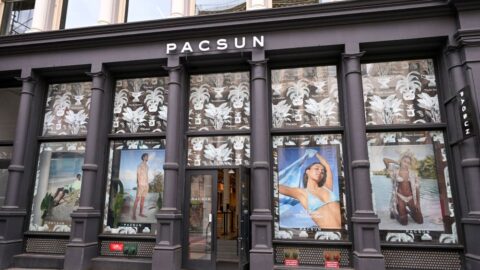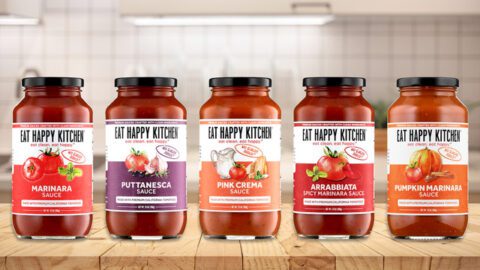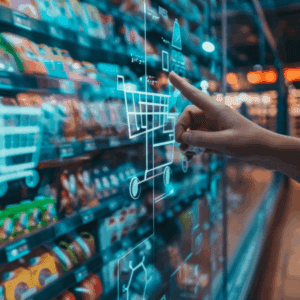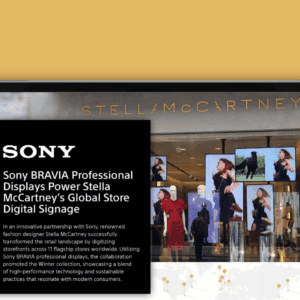Ken Hughes has become a fixture on the retail speaker circuit thanks to his in-depth research on consumer behaviors. He is a consumer behavioralist, after all. But when describing the nature of his work to strangers outside of the industry, he distills his work down to simpler terms: “I study how people buy, why people buy and how we can make them buy more.”
But in the context of the current retail climate, Hughes’ expertise has become even more in-demand. In his words, he motivates people to build better connections with their customers, and even with their employees. In the age of “digital acceleration,” deep customer understanding and finding new, more meaningful ways to engage with people is key. Because while digital tools and tech allow brands to reach and sell to people at scale, the downside is that intimacy is quickly lost.
Hughes will take the stage at the Retail Innovation Conference & Expo to explore why consumer connection is so often lost in the digital realm, and how brands and retailers can tap a tactical scorecard to help them assess and enrich personal relationships. Here he offers insight into his work as a consumer behavioralist, how the pandemic has shaped his work and why he has decided to dig into this overlooked “digital divide.”
Retail TouchPoints (RTP): Are there any common misconceptions about the work you do as a consumer behavioralist?
Ken Hughes: I study leadership and I study people. I’m fascinated by human behavior, why people act the way they do and what influences them. It covers everything from social anthropology, cyber behaviorism, behavioral economics to sociology and psychology.
I think people always assume that I am there to study their behaviors so that I can sell that information to brands and retailers to make unsuspecting consumers buy more. I guess there is some truth to that: I want to understand how people live their lives, what they want from their lives, how they want to fulfill their hopes and dreams, and then bring products and services to market that help them do that.
I serve every industry from consumer retail to pharmaceutical, healthcare, technology and fintech, and what I find fascinating is that every organization has the same issues that relate to connection: how we build better connections with our consumer, how we bring product and service to life, how we highlight the customer experience, how we bring joy and delight and excitement to consumers. What I enjoy most about this type of work is that I’m ultimately helping people understand people.
RTP: What do you find most meaningful about your work for retail specifically?
Hughes: I think now is the most exciting time to work in retail. The traditional marketplace model has been around for thousands of years. Imagine the dusty square in Egypt where there were some traders gathering around, bringing their wares to sell for the day, and people would travel to the marketplace to buy those wares. In this scenario, the consumer and the retailer both did a lot of work traveling to a space to trade. Today, digital has given us such a change in terms of how that model works.
I think more change has happened in retail over the last 10 to 15 years than in the previous 50. And I think over the next 10 years, even more accelerated change will happen: the business models, the systems and consumer expectations all will change. That’s why to work in retail and consumer branding right now is way more exciting than it had been previously. The brands that bring innovation to market can bring a meaningful degree of change to people’s lives through their products and services they bring.
RTP: In an increasingly digital world, why do you believe achieving connection and loyalty is such a challenge, especially when digital tools and channels are supposed to allow us to connect to each other faster and more easily?
Hughes: Digital is amazing because we can remove friction from the customer journey. We can personalize content faster and consumers can get information, products and services they need faster than ever. What digital lacks, though, is depth of connection, and that is a concern. We can see already with Gen Z that their use of social media is causing more loneliness, more isolation and more self-worth issues. It’s creating a disconnect when this technology was supposed to connect the world. And so there is a debate to be had, where yes, digital is convenient, but we are lacking depth. We have to look at a digital interface and determine how we can actually get emotional traction via this digital interface. The next generation of retail is where we can actually have a digital retail concept, our digital retail connections for marketing or branding, that make consumers feel something.
Digital has had an amazing evolution, but we’re at a crossroads where retail leaders are going to ask how they can build emotional human connection into the process, where yes the customer gets what they want fast and instantly — but also feels that they’re relevant, feels that they’re worth something, and feels that we value their business, the way we value any kind of relationship in our personal lives.
RTP: How have the last two years impacted your outlook on the work you do?
Hughes: The pandemic has ignited significant social, psychological and behavioral change. People are asking themselves big questions about how they want to live, how they want to work, who they want to live with and more. The social and psychological isolation was a lot for us and that’s why I did a lot of work on the psychology of captivity, as well as the psychology of resilience and recovery.
RTP: With these behavioral and social shifts in mind, what issues do you think retail and consumer brands need to prioritize in 2022?
Hughes: It’s all about connection as a heartbeat value. Make no mistake: selling a product or service is a transaction, it’s not a connection, or it’s a very temporary connection. Brand loyalty also is often misused in retail. Just because your consumer buys a product from you every single week or visits your store every single week, it does not make them loyal. Loyalty is an emotional bond.
If we want genuine customer lifetime value, we need to engage with our customers emotionally to the point where they actually feel some affinity for the brand. Consumers are yearning to have more and deeper attachments. After social isolation, that’s what happens. They’re all yearning for attachment to their friends, family and to society as a whole. Brands can capitalize on that yearning for attachment. Now is the time to build brand loyalty, now’s the time to lay down those foundations of customer lifetime value. If you can make consumers feel something, feel like they’re in a true relationship with the retailer instead of just a transaction, that’s how you’ll achieve customer loyalty.
RTP: How will your keynote at the Retail Innovation Conference & Expo support brands and retailers as they try to navigate this “crossroads”?
Hughes: My keynote, “Love is a Verb,” will focus on how retailers can make their employees and consumers see that they value them. We’re going to look at the 10 aspects of a healthy relationship in the human world, and how we can bring those values to life in the customer journey.
It will be a speech all about human empathy and connection. My goal will be to have every audience member leave thinking: “Okay, how can we do better across these 10 platforms in our customer journey? How can we bring the brand to life for customers, make them feel something and make them feel that they are connected and in a relationship with us?”
Registration is now open for the Retail Innovation Conference & Expo. Visit the site to learn more about the experience and how we’re bringing the leaders and changemakers of the industry together.













